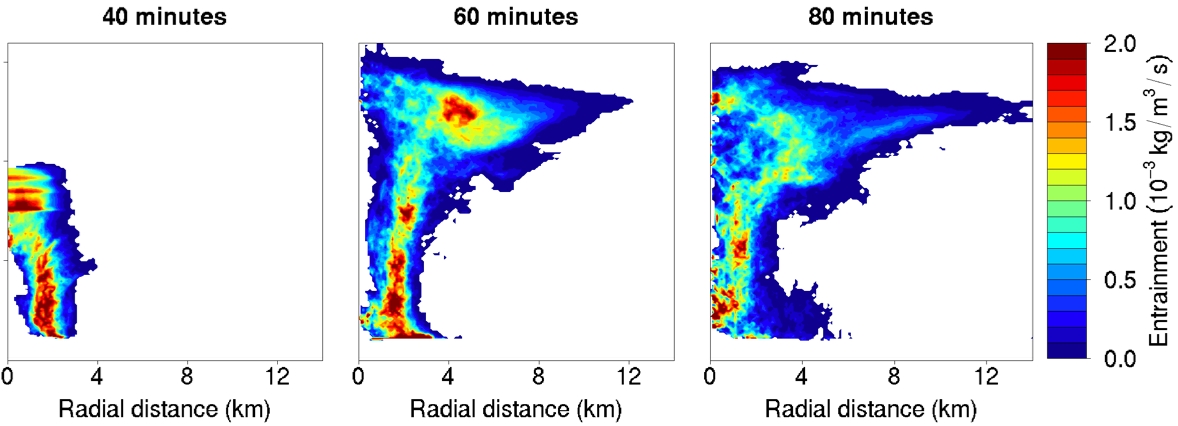Romps, A direct measure of entrainment, JAS, 2010
Paper
Description
A new method is introduced for directly measuring convective entrainment and detrainment in a cloud-resolving simulation. This technique is used to show that previous estimates of convective entrainment are too small. Those previous estimates have been obtained using the bulk-plume equations for a conserved tracer, such as total water in non-precipitating convection. By not accounting for the variability of tracers in clouds and in the environment, it is argued that the bulk-plume equations systematically underestimate entrainment. Using tracers with different vertical profiles, it is also shown that the bulk-plume estimates are tracer dependent and, in some cases, unphysical.
The new direct-measurement technique reveals the spatial structure of entrainment, shown here azimuthally averaged, for three intervals during the life cycle of a cumulonimbus.

The new direct-measurement technique diagnoses entrainment and detrainment at the grid-cell level. Using this method in large-eddy simulations of shallow and deep convection, it is found that the bulk-plume method underestimates entrainment by roughly a factor of two. The directly measured entrainment rates are then compared to cloud height and cloud buoyancy. Contrary to existing theories, fractional entrainment is not found to scale like the inverse of height, cloud buoyancy, or the gradient of cloud buoyancy. On the other hand, fractional detrainment is found to scale linearly with cloud buoyancy. Finally, direct measurement is used to diagnose the spatial distribution of entrainment and detrainment during the evolution of an individual deep cumulonimbus.